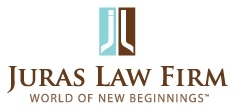EB-1A Visa Approved for International Soccer Star | Extraordinary Ability Green Card for Athletes
EB-1A Petition Approved for Internationally Acclaimed Soccer Player
We are thrilled to announce the approval of an EB-1A petition—a first-preference immigrant petition—for our client, a world-class professional soccer player. This successful case highlights how athletes of extraordinary ability can qualify for a U.S. green card without employer sponsorship or labor certification.
Our client’s remarkable achievements on both national and international stages met the strict legal requirements under 8 C.F.R. § 204.5(h)(3) for individuals of extraordinary ability.
What Is the EB-1A Petition for Individuals of Extraordinary Ability?
The EB-1A immigrant petition is designed for individuals who are at the very top of their field—whether in athletics, the arts, sciences, business, or education. It provides a direct path to a U.S. green card without needing a job offer or PERM labor certification.
To qualify, applicants must demonstrate sustained national or international acclaim through documentation of a major internationally recognized award or satisfy at least three out of ten criteria.
How We Proved EB-1A Eligibility for a Professional Soccer Player
In our client’s case, we strategically demonstrated that he met three key EB-1A criteria for athletes of extraordinary ability:
- Nationally and Internationally Recognized Awards
Our client received numerous awards honoring his soccer achievements. He was the top goal scorer in his home country, broke longstanding records both there and in the U.S., and earned recognition from leading soccer organizations. These formal accolades played a critical role in proving national and international acclaim.
- Membership in Athletic Associations requiring Outstanding Achievement of their Members, as judged by Recognized National and International Experts
He held membership in high-level soccer associations, including:
- National Association of Intercollegiate Athletics (NAIA)
- United Soccer League Players Association (USLPA)
- His national soccer team, where he competed internationally
We demonstrated in detail to the satisfaction of USCIS that our client (i) was a member of the associations, (ii) the associations operate in the field of soccer, (iii) membership requires outstanding achievements, and (iv) admission is evaluated by recognized experts—thereby meeting the second criterion.
- Published Material about Client in Major Sports Media
Our client’s career was extensively covered by national and international sports outlets. These features highlighted his milestones, record-breaking achievements, team affiliations, and awards, thereby establishing that he met the third criterion.
Continuation of Professional Soccer Career in the U.S. and Merit Evaluation
As required under the EB-1 category, our client demonstrated that he will continue his professional soccer career in the United States. After USCIS determined that he met at least three of the regulatory criteria, it proceeded with the final merits determination. Numerous expert opinion letters from respected figures in the international soccer community assisted USCIS in its evaluation and ultimately supported the petition’s approval.
A Winning Legal Strategy for Extraordinary Ability Petitions
Filing a successful EB-1A green card petition requires more than meeting technical requirements—it demands a persuasive, well-documented narrative aligned with USCIS expectations. Our immigration law firm works closely with clients to build strong, individualized cases that meet each of the EB-1 regulatory criteria.
Interested in learning if you qualify for an EB-1 green card as an athlete?
If you are a professional athlete, coach, or performer with international recognition and a record of sustained excellence, you may qualify for a U.S. green card through the EB-1A extraordinary ability category. Our firm specializes in extraordinary ability visas for athletes and professionals.
Find out if you qualify for an EB-1 green card: https://juraslaw.com/do-you-qualify-for-eb-1/
Schedule a consultation: https://calendly.com/irena-3
Explore your immigration options and take the first step on your U.S. immigration journey today.


